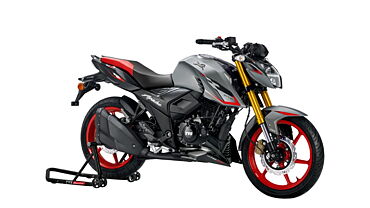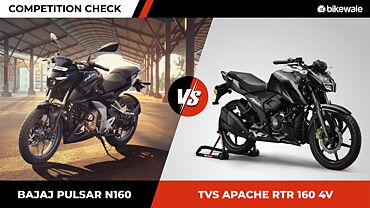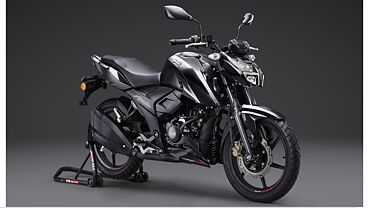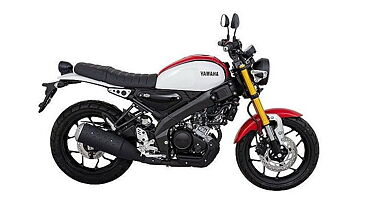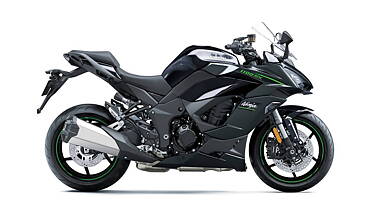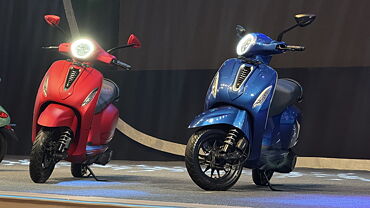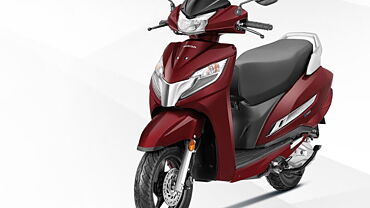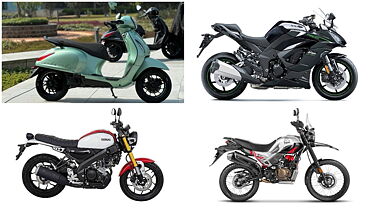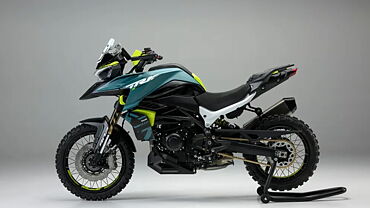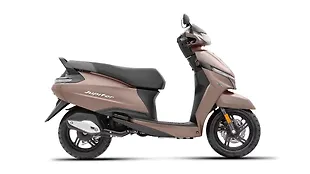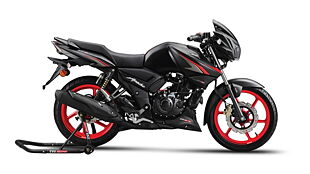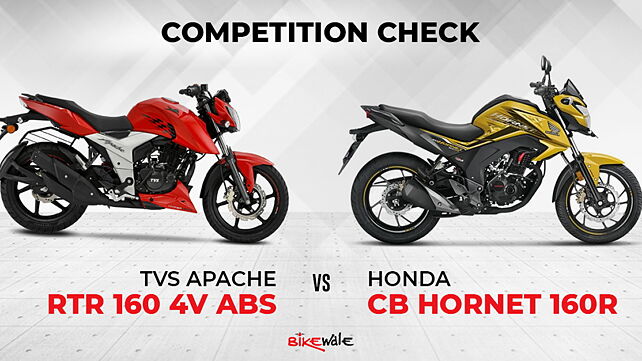
TVS updated the Apache RTR 160 4V with a single-channel ABS unit a while ago. Now, it is on par with its closest rival, the Honda CB Hornet 160R which was already equipped with a single-channel ABS unit. We take a look at how the rivals fare against each other.
Design and Features
The TVS Apache RTR 160 4V ABS sports an aggressive design language similar to its bigger sibling, the Apache RTR 200 4V. So there’s an angular headlamp with LED DRLs and a neatly designed 12-litre fuel-tank. To complement its styling is a sharp engine cowl and an exhaust made to look like dual-barrels. The CB Hornet 160R is stylish too with its muscular 12-litre fuel tank turning most heads. It also comes equipped with a full-LED headlamp and a distinctive ‘X’ shaped tail lamp. Furthermore, the chunky 140-section rear tyre and stubby exhaust canister completes the CB Hornet’s streetfighter demeanour.
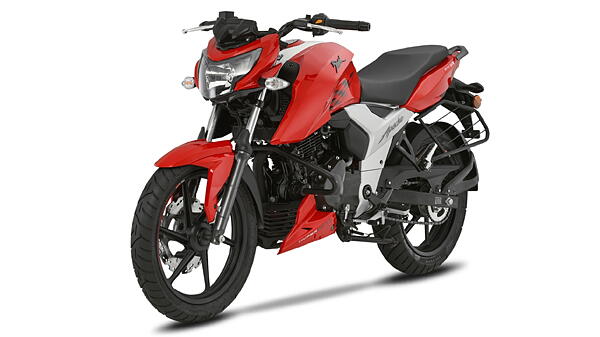
The Apache RTR 160 4V’s LCD instrument cluster accentuates its sporty character and displays a top speed recorder, a 0-60kmph time recorder, a lap time recorder, two trip meters and a clock apart from basic information like speedometer, fuel gauge and odometer.
Meanwhile, the CB Hornet also gets a fully-digital instrument cluster which as compared to the Apache RTR 160 4V displays lesser information. However it has all vital information and even a gear-position indicator which the Apache misses out on. Strangely though, the bike misses out on an engine kill switch.
Engine
The Honda CB Hornet 160R uses a 162cc, single-cylinder, air-cooled, two-valve engine. The motor is only available in a carburetted variant that produces 14.9bhp and 14.5Nm of torque. It is mated to a five-speed gearbox.
The TVS Apache RTR 160 4V ABS is powered by a 159.7cc, single-cylinder, oil-cooled, four-valve engine. This unit is mated to a five-speed gearbox and comes with an option of a carburettor or fuel-injection system. The power figures for the carb variant stands at 16.1bhp while the Fi version produces 16.3bhp. Both versions generate 14.8Nm of torque. So, thanks to better tech, the TVS Apache RTR 160 4V produces more power than the CB Hornet 160R.
Cycle Parts
Both motorcycles ride on 17-inch alloys shod with tubeless tyres. The suspension duties are also handled by similar hardware; telescopic forks up front and a monoshock at the rear. Braking duties on the Apache RTR 160 4V ABS are done by a 270mm disc upfront and a 200mm disc at the rear.
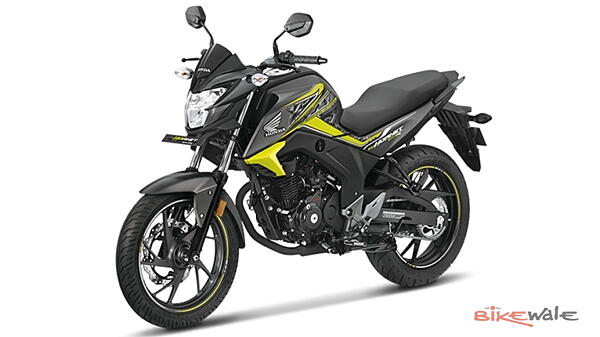
The Honda CB Hornet ABS DLX on the other hand gets a slightly larger, 276mm disc at the front and a 220mm disc for the rear. It is also offered with a CBS variant and an ABS version with a rear drum brake. The Apache RTR 160 4V ABS and CB Hornet 160R come equipped with a single-channel ABS. Although these will be the standard once the ABS mandate kicks in.
Pricing
The Apache RTR 160 4V ABS is offered in three versions. There is the drum and disc ABS version priced at Rs 91,959 and Rs 94,959 each with a carburetted engine. The ABS version with fuel-injection costs Rs 1.01 lakhs.
Honda offers the CB Hornet in three variants. The CBS costs Rs 90,681 while the drum-ABS and disc-ABS are priced at Rs 91,682 and Rs 94,181 respectively. While the Apache offers better tech, the CB Hornet makes up with features like LED lighting and wider tyres.
All prices ex-showroom, Delhi.


